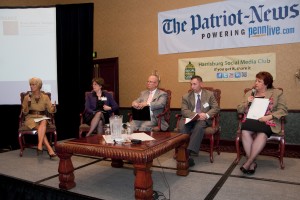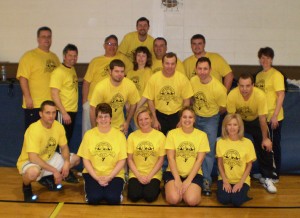
Our Harrisburg Social Media Club has been active for two years now, and we have a diverse membership of entrepreneurs, media, academics, B2C, B2B, and the public sector.
Why would business people, joined by the principle of If you get it, share it, want to spend time after work tweeting, Instagramming, and Facebooking with strangers? Is there any business value to this stuff? Isn’t Twitter inane chatter?
With Facebook’s user base surpassing 1 billion, it’s inane to waste time discussing the communications heft of social media. New media has collided with traditional media at such force that entire industries and careers have been born—Content Creator, Content Curator, Social Media Manager, Digital Strategist. It’s hard to find a news channel that isn’t running a Twitter hashtag at the bottom of the screen directing the viewer to integrated information. Even The Wall Street Journal cites tweets as sources. So to “get it,” puts you at a business advantage.
The first presidential debate on October 3, 2012 distinguished itself by the attention, predictions, and sentiment analysis paid to conversations on Twitter. More than 10 million tweets piped the Web in the 90-minute debate.
Why are your friends in Social Media Club priceless? They help you keep up with the platforms, the analytics, and content creation and curation. To survive as a communications professional—or even in business—understanding social media is a must-know, not a nice-to-know.
So, what’s the business value in joining a Social Media Club?
- Google Juice. The information we tweet and share on Twitter is Google gold for your brand and your business. It’s valuable for both the SMC members and the host business. And it’s fodder for blog posts, op-eds, and videos. An added bonus is the regional broadcast power. Harrisburg has been suffering from a fiscal crisis and any news that shines a positive light on our region is considered oxygen. The more we tweet about our smart people, strong businesses, vibrant tourism, and special places, the better Harrisburg looks on Google. When we tweet and post pictures about our events, a riverboat ride, or the state capitol building, it gives the world a better, more holistic story of who we are.
- Your friends in Social Media Club are priceless. In-the-trench social media leaders give an insider’s look at how to market, share content, respond to snarky comments, and build communities. The digital channels are evolving daily and our SMC colleagues are the first people I turn to when I have a digital question. And it’s a wonderful community to build and foster should your company need support in a public relations crisis.
- A digitally active region is a vibrant region. Although social media is not new to tech savvy people and early adopters, it still remains nebulous and elusive to many small businesses. QR codes, Yelp, Pinterest, and Instagram are good marketing tools for small business. When you help local small business understand new marketing tools, you help the entire region and economy. A rising tide lifts all boats, and it’s time to share the knowledge—If you get it, share it.

